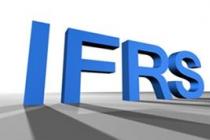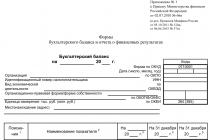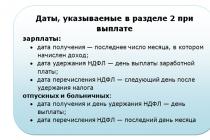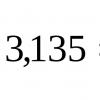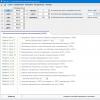Transactions with money, both cash and non-cash, concern not only the immediate residents of the country, but also the banks that issue them. There are situations when a country needs to receive an additional amount of banknotes, in which case emission takes place.
What is emission?
The issue of money in a broad concept implies the release of an additional number of banknotes or other means of payment, and, accordingly, their introduction into circulation. This approach ends with the money supply increasing significantly, which depends more on the amount of additional money issued.
Despite the fact that emission itself implies the release of money, in economics such concepts are usually separated. The fact is that money is constantly issued, but in the case of regular money issue, exactly the same number of damaged bills is “recycled.” The issue implies their additional release without withdrawing a similar amount.
Forms of issue
In addition to the fact that there is emission, it is necessary to understand that there are different forms of this procedure. There are three main forms:
- fiduciary;
- deposit and check;
- issue of securities.
Despite the rather unusual name, the first form of issue is an additional issue of banknotes. Previously, each additionally issued banknote had to be backed by a certain amount of gold. That is, the precious metal itself had value, and money was issued only for convenience. But after a certain time, this rule was abandoned, so the issue of additional banknotes is currently not backed by gold.

The second type of issue is mainly aimed at commercial banks. If we compare the volumes with the fiduciary, then the deposit-check is significantly superior in volumes.
The issue of securities, rather, concerns specific companies, and in most cases at the beginning of their journey. The fact is that start-up companies rarely have enough capital that could give impetus to the business at a serious level, so companies need additional investments. By issuing securities, which can be shares, bonds, etc., they enable investors to buy them with the condition of paying dividends in the future. The faster the company develops, the more significantly the share price will rise, since this is one of the indicators of the company's development and profitability.
What comes first?
There are two concepts and two types of calculations that go side by side. Therefore, the issue of cash and non-cash money is considered part of one action. And although these two processes inherently complement each other, one procedure is carried out before the other.
The issue of non-cash money is primary, because before printing more money, its increase must be reflected as electronic data in the accounts of commercial banks.
How does the implementation take place?
After the issue of non-cash money has occurred, their introduction into circulation begins. They come from banks when various credit transactions take place. From this fact the conclusion emerges that one of the main principles of the introduction of new money is the credit nature of the transactions performed.

The main goal of the additional issue of non-cash money, and consequently cash, is the ability to meet the needs of the required amounts of those enterprises that need investment. And it happens quite simply. The central bank gives a loan to a group of commercial banks, and additional money appears in their account. With a constant increase in production, the population requires an additional amount of money, which determines how the mechanism of non-cash money emission works.
Bank multiplier
Like other processes, emission must have its own system and mechanism of operation. In this regard, the issue of non-cash money has a similar effect; the banking multiplier mechanism allows the process to be put into effect. The bank multiplier is the process of creating more money capital in the deposit accounts of certain commercial banks. A similar process can be put in place during the cash flow period.
Animation as a process
Despite the fact that non-cash money is issued according to one principle, the multiplier can have its own variations. In this regard, the concepts of banking, credit and deposit multiplier are distinguished; the principle of all processes is united by an additional increase in funds, but this happens under different conditions.

As for the banking multiplier, in this case the issue of non-cash money is carried out thanks to commercial banks. The main feature is that the whole system must be involved; one bank cannot independently carry out such a process.
As for the credit multiplier, the name of the process describes almost the entire system. The mechanism is that the main process in this case will be the transfer of loan funds.
The deposit multiplier allows you to demonstrate the process at the expense of the object itself. That is, it is reflected by the money that is in the deposit accounts of banks, and it is their increase that will be visible after the implementation of the animation.
Procedure
It may seem to many that there are no particular difficulties in this process. This may be true, but it is necessary to comply with a certain procedure for carrying out the operation, where the central bank will be the first level and initial authority. Further, the procedure for issuing cash and non-cash money is demonstrated by the next stage of the mechanism - commercial banks.

And if the central bank is considered as an entity that monitors the process, then commercial banks allow the issue to be put into effect. Moreover, this process is so automated that one specific bank cannot influence it and somehow disrupt this system. In addition, the implementation and implementation of this mechanism directly depends on the free reserve.
Free reserve
The issue of non-cash money cannot be carried out without the so-called free reserve. This concept implies the totality of all resources that are available in commercial banks, which can directly be used in this specific period of time to carry out active banking operations. Despite the fact that the concept has long been known to everyone, and came to the Russian Federation from the West, it cannot be considered completely correct. The fact is that the reserves of a particular commercial bank, which are considered free, are liquid assets, but based on the definition, it is clear that in this case the bank’s liabilities are implied.
Who has what role?
The main question remains: who issues non-cash money? Naturally, one of the main roles belongs to the system of commercial banks, but this does not mean that we should forget about the central bank. But even now, economists do not give a specific answer about the role of the central bank when issuing non-cash money in the Russian Federation. At the same time, there are certain positions on this issue in which economists agree:
- The non-cash issue is carried out primarily at the expense of the central bank. Commercial companies, in turn, are responsible for the implementation of this system and for the redistribution of emission funds.
- Commercial banks themselves cannot set volumes that exceed their “capabilities.” These figures depend on the funds available in the correspondent account with the central bank.
- The process of issuing non-cash money cannot be carried out only by the central or only by commercial banks, since the first makes it possible to carry out this process, and the second, through various operations, puts it into effect.
 As for the monopolization of the system, its implementation in favor of the central bank would only occur if the mandatory reserve ratio was equal to 100%.
As for the monopolization of the system, its implementation in favor of the central bank would only occur if the mandatory reserve ratio was equal to 100%.
Everything is under control
The fact is that, despite the absence of printed currency, it is necessary to control the money supply in non-cash form. Every quarter, forecasts and calculations are made of the amount of money that will be in circulation. This indicator includes not only non-cash money, but also printed banknotes, and including any monetary obligations of banks. Based on these calculations, it is possible to regulate the system of the need to issue money and calculate its quantity in a certain period of time.

In addition, other indicators are taken into account. For example, how a certain city or region is developing socially and economically, whether there is a need for emission, and if there is one, then in what quantity additional issue of money is needed. But these are not just virtual numbers and approximate calculations; the income and expenses of citizens are taken into account, and average indicators for the population of a particular region are displayed. It takes into account what balances you currently have on accounts, deposits or loans.
Only after this can we talk about an increase in funds among the population as a whole. In addition to quarterly indicators that are monitored to calculate indicators, there is also monthly monitoring of the volume of money supply that is in circulation.
Issue of cash
Many concepts are better understood in comparison, one of which can be considered on the one hand a complement, and on the other the complete opposite, is the issue of cash. This is the same process of additional issue of money, only it differs from non-cash ones in that monetary units are printed. The process cannot be called more complex, it’s just different.
In this particular area, there are monopolists; as for the Russian Federation, in this country such right belongs to the Central Bank of the Russian Federation.
Cash is issued in a decentralized manner, and there is an explanation for this. The need for additional paper money primarily depends on the population turning to local commercial banks with a desire to obtain more cash. These indicators are constantly changing, one month they may show one figure, and the next much less or more. Not only is it difficult to keep track of them, but it is also impractical to satisfy them.
The process of introducing additional amounts of cash is carried out initially by the Central Bank of the Russian Federation, as well as its divisions, which are located in different regions and allow for settlement and cash services. Therefore, working cash and reserve funds are necessary.
The cash flow is a combination of the processes of receipt and disbursement of funds that are familiar to us. That is, money here is in constant motion, in circulation. If more money comes in than usual, it is withdrawn and moved to the reserve fund.
As for the reserve fund, there is money here that is not involved in constant circulation; its purpose is to go to the working cash register in the event of an increase in the need to issue cash to citizens.
Money- an integral element of economic turnover. The issuance of money, in cash or non-cash form, occurs constantly to satisfy market needs. Emission is the release of money into circulation. The bank provides a loan to the client - non-cash money is issued into circulation. The bank client withdraws money from the account and receives it at the bank's cash desk - the turnover is replenished with cash. Conversely, when borrowers repay loans or depositors deposit funds into accounts, cash flow decreases.
Emission concept
The word “emission” came to us from the Latin language, translated emissio – release, emitto – to release. An issue is the release of money and/or securities into circulation. In developed countries, central banks and treasuries have the exclusive right to issue money. Banks of issue issue credit money, and the treasury issues treasury bills and small change coins. Each specific country has its own emission system, which determines the rules for issuing banknotes, as well as the size of the issue of cash, its norms and forms of security. Forms of issue.
The main forms of emission include the following:
- Issue of bank cards – production of bank cards.
- Money issue is the release of cash or non-cash money into circulation.
- Issue of securities – release of issue-grade securities into circulation.
- Issue of postage stamps – putting postage marks into circulation.
Issue of bank cards

Issue of bank cards- this is the activity of the bank in issuing cards into circulation. Card issuance is an important level of organizing the plastic card business in a commercial bank and requires a professional approach and highly qualified specialists.
The bank’s activities in issuing cards into circulation can be divided into several stages:
- Registration of contractual relations with clients, opening of card accounts;
- Production of plastic cards, issuance to the client, maintenance of plastic cards;
- Conducting card account transactions;
- Closing a card account, confiscating and destroying a plastic card.
The first stage is to check submitted applications for the issuance of cards and formalize contractual relations with clients. The basis regulating the relationship between bank institutions and the client is the card account agreement.
The card account agreement must reflect the following conditions:
- name of bank institution and client
- name of payment system
- type of card
- procedure for using the card, including the procedure for providing an overdraft (if provided)
- card validity period (if set)
- conditions for conducting currency exchange transactions
- contract time
- procedure for replacing and withdrawing a card
- rights and obligations of the parties
- responsibility of the parties
- dispute resolution procedure
- terms of placement and procedure for writing off the amounts of the security deposit (if established)
- rewards for card transactions
- amount and procedure for depositing funds by individuals
- terms of termination of the contract
- grounds for termination of the contract earlier than the established period
- the procedure for returning funds to individuals in the event of failure to fulfill an obligation or termination of a contract earlier than the established period
- other conditions in accordance with the law
Issue of bank cards in Russia

According to the Bank of Russia, more than 65% of banks issue and/or acquire payment cards (661 credit institutions out of 965), the number of bank cards issued by them (data as of July 1, 2012) amounted to 220 million, which is 24% more than in the past year.
More than 80% of issued bank cards were issued by the international payment systems VISA and Mastercard. Russian payment systems (Sbercard, Zolotaya Korona, STB Card, Union Card) control from 6% to 12% of the market.
The leader in issuing debit bank cards in Russia is Sberbank (about 45% of all cards issued). As of April 1, 2007, the volume of Sberbank card issues reached 18.77 million cards, having increased by 7% in the 1st quarter of 2007. At the same time, the number of cards of the international payment systems VISA and MasterCard amounted to 15.63 million cards (83% of the total issue volume), including: MasterCard and Maestro – 9.21 million cards; VISA and VISA Electron – 6.42 million cards. The number of Sbercard microprocessor cards amounted to 3.14 million cards.
According to Visa International, at the end of the 2nd quarter of 2007, Russian banks issued 39.4 million VISA cards, which is 47% more than last year.
Money issue

Monetary, or fiduciary issue, is the issue of banknotes (in Russia - rubles). At the moment, the money issue is not backed by gold. Although previously, banknotes were released into circulation only when it was covered by gold reserves. The issue of cash in Russia is subject to the following principles: Non-obligatory collateral (the relationship between gold and the ruble has not been officially established). Monopoly and uniqueness (only the Central Bank of Russia can issue funds into circulation). Unconditional obligation (the ruble is the only means of payment in Russia established by law). Unlimited exchangeability (no restrictions on exchange amounts). Legal
regulation, both the issue and withdrawal of money from circulation, is the responsibility of the Board of Directors of the Central Bank.
Issue of non-cash money

Deposit-check emission can be carried out either by the Central Bank or privately. This form of emission is the basis of non-cash payments. Deposit check emission exceeds the emission of cash in volume. Typically, the issue of non-cash money occurs during the issuance of loans. Due to issued loans, the so-called bank multiplier increases, increasing the money supply.
The issue of non-cash money also occurs at the moment when a bill of exchange is used as a means of payment for a product or service. And if the bill is repaid, the additional issue is liquidated, that is, credit compression occurs.
The following principles for issuing cash apply in Russia:
- the principle of optional collateral with gold (no official ratio is established between the ruble and gold or other precious metals);
- banknotes and coins of the Bank of Russia are unconditional obligations of the Bank of Russia and are backed by all its assets;
- the principle of monopoly and uniqueness (the issue of cash, the organization of its circulation and withdrawal on the territory of Russia are carried out exclusively by the Central Bank of Russia);
- the principle of unconditional obligatoriness (the ruble is the only legal tender on the territory of Russia);
- the principle of unlimited exchangeability (no restrictions on amounts or subjects of exchange are allowed; when exchanging banknotes and coins for banknotes of a new type, the period of their withdrawal from circulation cannot be less than one year and more than five years);
- the principle of legal regulation (the decision to issue money into circulation and withdraw it from circulation is made by the Board of Directors of the Bank of Russia).
Current situation
According to the Bank of England, in December 2013, approximately 97% of the money supply in the economy was bank deposits, mostly created by private banks themselves as a result of lending.
Also significant is the fact that an increase in the money supply in the interests of economic development, as a rule, is possible only by increasing the debts of economic entities to banks. Moreover, the growth of the money supply (and debts) in the modern economy outpaces the growth of GDP (see Turner, 2014). At the same time, the growth of debts, which is faster than GDP, is pushing towards a financial crisis.
In this regard, some economists propose increasing the reserve requirements for current accounts to 100%. This idea was first proposed by Frederick Soddy in the 1920s, and later similar proposals were made by Irving Fisher and Henry Simons. Various versions of this kind of reform have also been proposed by Milton Friedman (1960), James Tobin (1987), John Kay (2009) and Lawrence Kotlikoff (2010). In their opinion, this will deprive banks of the opportunity to create new money in the form of loans and transfer the issue of money exclusively to the state. IMF economists modeled Fisher's proposals in 2012 and concluded that there was "strong support" for the claims.
advantages of the system he proposes. A further development of Fisher's proposals (mainly related to the specifics of monetary circulation in electronic form) is the work of Joseph Huber and James Roberts “Creating New Money” (2000). The NGO Positive Money was created in the UK; it is campaigning to deprive banks of the right to issue and create “sovereign money”.
Issue of securities and its features

The issue of securities is the release into circulation of shares, bonds and other types of important securities. Moreover, all procedures must be carried out in strict accordance with the law. An issuer of securities is a company that issues securities.
The main purpose of issuing government securities is to attract additional financial resources by the company. If shares are used for this, then the authorized capital of the enterprise increases, in the case of bonds, loan conditions apply. Moreover, all stages are controlled by government agencies that regulate the securities market.
An issue can be resorted to in order to issue securities with new rights, change the par value of shares that are already in circulation, and also establish a joint stock company.
Securities issuance standards
On the territory of the Russian Federation, certain rules apply for the issue of shares, additional shares and bonds. A procedure for their preparation has also been established. Securities issuance standards are a document that regulates all the described actions. They allow you to regulate the issue of shares of a joint-stock company upon its registration, additional securities that are distributed among shareholders, as well as additional shares.
Also, standards for issuing securities determine the rules for issuing bonds that are placed through subscription, and securities that are placed through conversion. Shares are placed upon establishment of a joint-stock company among its owners. For this, subscription and conversion are used.
Main stages of securities issue

If we consider the usual procedure for issuing securities, it includes the following stages of registration of a prospectus for the issue of securities:
- A decision is made to issue securities.
- The decision on the issue or additional issue of securities is approved.
- State registration of securities prospectus.
- Placement of securities.
- State registration of the report on the results of the issue.
The procedure for issuing securities is best carried out in the sequence described above. If it is violated, then conditions are created for the issue to be recognized as unfair. As a result, a decision may be made to refuse state registration of securities.
When registering an issue of shares, it is necessary to carry out many operations, as well as draw up various documentation. It must be filled out legally correctly and contain no errors. It is best at this stage to contact specialists who will provide qualified assistance.
The prospectus for the issue of securities by banks and other organizations is intended to disclose reliable and complete information that will serve as the basis for investors to make an objective decision to purchase them.
How is the issue organized?

As a rule, when carrying out an issue, professional stock market participants or underwriters are involved. They sign an agreement with the issuer, after which they are responsible for a number of obligations affecting the issue of securities and their placement. The underwriter receives a certain fee for his services.
The underwriter services the entire procedure for issuing securities: justifies the issue, determines the parameters, prepares the required documents, registers them with government agencies, and places them among investors (third-party organizations may be involved).
Often, underwriters undertake certain obligations that are associated with the placement of an issue.
They can be of the following types:
- The purchase of all securities at a set price, after which they are placed at market value. The intermediary assumes all risks if shares or other securities are not sold.
- Obligations to purchase only the under-allocated portion (it can be actual and fixed), risks are associated only with these securities.
- The underwriter assumes all the responsibilities of an intermediary: he helps with the placement of the issue, but he is not responsible for the under-placement of securities. This risk falls entirely on the issuer of the securities.
Types of emissions
Emission processes can be characterized from different angles. From the point of view of priority, emissions are usually divided into primary and secondary.
- A primary issue occurs either when a business entity issues its securities for the first time, or when a security is issued for the first time by that entity. For example, a company decides to issue its bonds for the first time, or a newly formed joint stock company issues its first shares. This also includes the situation when a company that previously issued only ordinary shares or bonds decided to issue for the first time, for example, its convertible bonds or preferred shares.
- A subsequent issue is a repeated placement of certain securities of a given commercial organization. According to the placement method, the issue can be carried out by distribution, subscription and conversion.
- The distribution of securities is their placement among a previously known circle of persons without concluding a purchase and sale agreement. Issue by distribution is possible only for shares, but not for bonds. The distribution of shares takes place either upon the establishment of a joint stock company, or upon their placement among its shareholders (bonus issue).
- Subscription is the placement of securities by concluding a purchase and sale agreement (i.e. on a reimbursable basis). Subscription can be carried out in two forms: by closed or open subscription.
- A closed subscription is the placement of a security among a previously known, limited circle of investors.
- An open subscription is the placement of a security among a potentially unlimited number of investors on the basis of wide publicity.
- Conversion is the placement of one type of security by exchanging it for another under predetermined conditions.
In general, the placement of shares can be carried out by distributing them among the founders of the joint-stock company, additional shares among shareholders, subscription and conversion (exchange) of other types of company securities into shares.
Bonds are placed only by subscription or conversion.
During the issue process, both registered and bearer securities can be issued; both in documentary and non-documentary forms.
The placement of a security, understood as the totality of all possible relations between the issuer of a security and other participants in the securities market, is its primary market.
Issue of postage stamps

Issue, or issue (from the Latin emissio - release), in philately - the putting into circulation of one or another postage stamp as a sign of postage, as well as the totality of all copies of the circulation of this stamp printed for this within a single printing order.
As a rule, postage stamps or their series are issued (issued) at once, however, there are also cases of phased introduction of circulation into postal circulation - both already published and also published in stages (with a difference of several days, months, annually or even less often). The totality of copies of a stamp (stamps) put into circulation during each stage is considered their separate issue, issue - regardless of whether these issues differ from each other in appearance and properties.
Brand publishing policy
Here it is important not only to determine the themes, plots and denominations of the planned issues, but also the circulation. To do this, it is necessary, if possible, to take into account the needs of the post office for postage stamps (approximately 10 percent of the circulation), the number of stamps sold through subscriptions and for free sale to philatelists, the foreign trade association "International Book" - abroad, the stock laid by DIEZPO for long-term storage for implementation in the future, the popularity of motifs and plots and other factors.
Large supplies and excess supply over demand reduce the popularity of the release. Large circulations, high denominations not related to postal rates, a large annual number of issues, poor artistic and printing performance negatively affect the popularity of stamps of a particular country, leading to a decrease in demand and, consequently, income of the postal administration. However, the artificial limitation of circulations, the abuse of issuing low-circulation stamps, overprints, number blocks that are not available for free sale or
sold under special conditions contribute to speculation and, in turn, lead to a decline in the popularity of brands in a given country.
Thus, not only philatelists, but also the postal administration of each country are interested in moderate, thoughtful, economically sound stamp publishing activities, or, as it is commonly called, emission policy. In fact, in the post-war decades, the post office of a number of countries, in pursuit of high incomes, brought down torrential streams of stamps on philatelists - bright pictures with far-fetched plots, high denominations. Their circulation is not related to the needs of the post office, but is intended only for “deep drainage” of the pockets of philatelists. The philatelist must learn to distinguish postage stamps issued by postal administrations pursuing a moderate emission policy from stamps issued for speculative purposes.
Harmful releases

According to the definition of the International Federation of Philately (FIP), harmful issues (issues) are considered to be the appearance of postal stamps, the real purpose of issuing which is to abuse the trust of philatelists and make money from them, and not for postal necessity. Such emissions are qualified by the FIP as “harmful to philately” and are considered speculative.
Such harmful issues are initiated not only by legitimate postal administrations (for example, the Arabian principalities in 1963–1973), but also by private individuals and commercial structures, and they can imitate legitimate issues, as well as be published on behalf of fictitious ones or those who do not have full power in any area. or the territory of issuers - brands of virtual states, “governments in exile,” rebel groups, etc. Such products are called speculative fiction and/or fraudulent issues.
At its congresses, the FIP improves the criteria for identifying harmful emissions; on this basis, the FIP “black list” is formed. All stamps included in this list are not permitted to be exhibited at philatelic exhibitions under the patronage of the FIP. Similar measures are being taken for their part by the International Bureau of the Universal Postal Union (UPU), the World Association for the Development of Philately (WARF), and other organizations.
In addition, the vast majority of illegal issues are ignored by reputable stamp catalogs, and in cases of legitimately issued stamps that are on the FIP “black list”, the catalogs, as a rule, do not provide illustrations, do not assign catalog numbers and are limited to a general brief information record about the nature of such stamps. emissions.
It is impossible to imagine modern society without money as a necessary part of economic turnover. To meet the ever-increasing demands of the market, they must be constantly produced:
- in the form of banknotes and coins;
- in the form of non-cash money (loans);
- as types of securities (bonds, bills).
What is money emission
The definition of emissions means the process of “production” of new money, as the most important element of the state’s financial system.
Non-cash issue occurs when banks provide loans to borrowers. In this process, the amount of non-cash money on the market increases. If a depositor withdraws cash from a bank account, turnover grows due to cash. Accordingly, the turnover of cash and non-cash funds decreases if depositors repay their loans in one way or another. The state emission system is the process of issuing and circulating national money on the market, regulated by law.
Modern trends in the economic development of countries with market principles have led to the development and significant predominance of the share of non-cash money in their overall monetary circulation, with a parallel decrease in cash.
Emission concept
This term was formed from the Latin word emissio, which means release, respectively, in combination with the word “money” it means the release of money or securities into the economy. But in this case, this translation does not fully reflect the essence. You should know that the meaning of the expression “issue of money” does not literally mean the issue of money. The creation of new money by issuers (producers of the money supply) does not necessarily provoke an increase in the total volume of money in the country due to the fact that in parallel, continuous reverse operations take place in the economy - closing accounts, withdrawing obsolete banknotes, paying off debts on loans. In this case, it is not emission as such that is carried out, but only a redistribution of the structural elements of money circulation. Processes that reflect emission, in any of their variants, mean an increase in the total money supply in the country’s economy, and their uncontrolled consequences are always fraught with negative trends.

Each country establishes its own emission schemes, regulating its size, rate and form of circulation, and rules for issuing cash. Economically developed countries establish the dominant role of the central bank in this process.
Rules of emission in the Russian Federation
The following main elements of emission policy have been formed in Russia:
- There is no provision for backing the ruble with gold assets or anything else.
- The ruble is a means of payment approved by law, mandatory for the entire territory of the country.
- Printing cash and organizing its introduction into the country’s economy is the exclusive sphere of activity of the Central Bank of Russia.
- The Central Bank acts as the sole and unconditional guarantor of all cash in the country, providing it only with its assets.
- It is prohibited to impose any restrictions on exchangeability procedures - to replace banknotes or coins with new money, the permissible period for their withdrawal is determined to be at least a year. The upper limit is limited to five years.
Emission processes: distribution of roles
The division of money issue depending on the type of issuer (money creator) is determined by the following scheme:
Central Bank:
- issues banknotes - banknotes;
- performs the function of purchasing treasury notes and issuing banknotes against them for balance;
- exercises control over the issue of securities by commercial banks, maintains their accounting and re-discounting, issuing its own money against bills of exchange;
- buys foreign currency, issuing its own against it in parallel.
Treasury Department:
- issues treasury notes;
- produces change coins.
Commercial banks:
- issue loans (credit money) to economic agents such as the state, enterprises, foreign companies, and individuals.
Types of emission and its order
The following types of emissions are distinguished:
- Monetary.
- Deposit check.
- Valuable papers.
During the formation of financial systems, the monopoly on emissions belonged to the state. However, with the emergence of commercial banks, credit money, represented by checks and bills, also entered the economy. In turn, in order to rediscount bills, the main banks were forced to launch the issue of banknotes, stabilizing the state of the financial market.
As a result, a financial situation has emerged in which the state provides for its own expenses by issuing new money, and banks - by issuing loans, that is, non-cash funds. This is where the types of emissions come from: government issue means budget or treasury issue, and bank issue means credit issue.
If the production of new banknotes and the increase in turnover through their market segments are, according to the legislation of the Russian Federation, exclusively under the jurisdiction of the Central Bank, then credit or deposit-check emission, which is the basis of non-cash turnover, is carried out by commercial banks that have the right to do so. The issue of securities is carried out by authorities, government agencies, as well as private companies that have such rights.
It is necessary to distinguish initial issue and secondary.

- In the primary form non-cash funds (credit money) are put into circulation by recording them in bank accounts when receiving loans. The total volume of non-cash payments in the country is determined by the amounts of credit money.
- Secondary emission observed when banks cash out bank accounts, that is, issue money in cash, or in other words, turn non-cash funds into cash.
Money issue
Money emission, that is, the issue of rubles, is also called fiduciary. If previously the issue of banknotes in the country was carried out only if it was covered by gold reserves, now this is not required.
Since money is an important factor that directly affects the well-being of society, income from its production (emission) should remain with the state. As a rule, the Central Bank regulates the issue of credit cards, and the Treasury regulates banknotes (treasury bills), securities, and coins.
Legal regulation of both the emission process and the withdrawal of cash from circulation is carried out in a monopoly manner by the Board of Directors of the Central Bank of Russia.
The issue of bank notes, as well as coins, can only be issued by a specialized institution - the mint. There are two of them in Russia: in Moscow and St. Petersburg, and they are united into OJSC Goznak. Medals, memorial signs, and badges are also minted here. Bills of exchange, bonds, passports, and other important documents that require a high degree of security against counterfeiting are printed in one of two specialized printing houses at mints. This is a very high-tech and unique production, the processes of which are controlled by strict regulations.
Issue of non-cash money
The first stage of the issue of non-cash money occurs when the main bank (Central Bank) issues loans to other financial institutions at the refinancing rate, which are deposited in their correspondent accounts. The Central Bank retains the amount of issued loans, which is repaid upon their return.
Non-cash money can be issued in the form of loans by all licensed banks, however, this cannot be done without the control of the Central Bank. The volume of transfers between banks is strictly regulated - they are not allowed to exceed the funds of the bank's correspondent account.
In case of insufficient funds, banks usually change refinancing rates. The increased mass of money turnover due to increasing lending is called the banking multiplier effect, which provokes negative economic situations.

Scheme of money emission of the banking system
In the modern economy, the share of bank deposits in relation to the total money supply reaches 70-90% in various periods. These accounts are created by the banks themselves when lending. As a result, a situation has recently developed where the growth of monetary resources significantly outpaces the growth of GDP, which undermines the economy and provokes a financial crisis.
Reverse process– reduction of credit money is carried out when repaying loans. If this process is not ensured by an adequate volume of emission, then a procedure for its liquidation is observed - the so-called credit contraction.
Issue of securities
The purpose of issuing securities is to attract additional funds into the economy. The legislation allows them to be issued not only by authorities and the state, but also by private organizations. Securities are inherently a special financial instrument aimed at performing certain tasks. It can be:
- Attracting additional funds to the business.
- Formation of the initial capital of a joint-stock company. This is a fairly common purpose of the issue, in which a whole batch of securities is formed.
- Replenishment of equity capital through non-borrowed or leveraged investments.
- Attracting foreign currency funds from foreign companies.
In any state there is a continuous flow of cash into non-cash funds and vice versa. If the stability of the economy largely depends on the organization of the financial structure of the state, then any market participant, including each of us, will be able to protect themselves from many troubles by being financially literate, including in the question of what is the issue of money.
Concept and types of money issue
Money emission itself refers to the release into circulation of an additional number of banknotes and means of payment, leading to an increase in the money supply. The issue of banknotes and coins is carried out by central banks and treasuries that have the right to issue.
However, most money is created through the expansion of commercial bank credit. This process is called deposit-check issue or the release of money into circulation by creating means of payment. There are different points of view on the concepts of monetary emission and the release of money into economic circulation.
The release of money into economic circulation may not be accompanied by an increase in the money supply.
Cash emission. The Central Bank of any state is the issuer of cash in circulation.
At the same time, he monitors the stability of the national economy. currencies, because banknotes retain their role only if their number is limited. Each Central Bank has a special division that directly carries out issuance and cash operations.
The Central Bank is engaged in the production of banknotes, their design, and pays attention to the issues of banknote durability and their protection.
When producing and developing banknotes, protection against counterfeiting comes first.
The independence of the Central Bank in issuing money has another specificity. The Central Bank pays with banknotes that it creates when it pays with claims on itself. Today, there is no legally established standard for exchanging these Central Bank obligations, for example, for gold.
It is necessary to distinguish between the concepts of “issue of money” and “issue of money”. In the conditions of the formation of market structures, the state cannot strictly control the volume of lending to the region and its money supply, but influences them by indirect methods. This function is carried out by the Central Bank. Employees of the Central Bank analyze and forecast the state of money circulation, find out trends in its development, predict the need for economic turnover in funds at the macro and micro levels, and set target figures for the minimum and maximum limits of growth in the money supply. Based on these studies, the Central Bank sets an approximate increase in the money supply in circulation. It is obvious that excessive emission will lead to the creation of a mass of money in circulation, which can cause a surge in inflation.
In principle, banknotes could be issued in unlimited quantities. Nevertheless, there are indirect boundaries - they are determined by the tasks assigned to the Central Bank. Based on these restrictions, banknotes of the Central Bank, as a rule, are secured in the form of its assets. The main items of assets that ensure the issuance of banknotes into circulation are official gold and foreign exchange reserves, government securities, and bank loans provided against securities. K - the amount of goods sold on credit; P - amount of payments on obligations; VP - the amount of mutually extinguishing payments; O - the average number of revolutions of a monetary unit in a given period of time. To calculate the amount of money in circulation, a formula developed by the American economist I. Fisher is often used.
However, it is, in fact, a simplified version of the above formula: CD = M * C: O, (1.2) where M is the number of goods sold;
In the conditions of an administrative-command economy, there was practically no difference between the issue of cash and the issue of non-cash money, since both issues were carried out by the State Bank of the USSR. In the conditions of market relations, the issuing function is divided: non-cash money is issued by a system of commercial banks and non-bank credit organizations; The Central Bank of the Russian Federation issues cash. The main purpose of issuing non-cash money into circulation is to satisfy the additional needs of legal entities for working capital. However, due to the funds available to credit institutions, they can satisfy only the usual, and not additional, need for working capital. Obviously, the additional need can be met with additional funds. Therefore, it is necessary to have a mechanism for issuing non-cash money that creates these additional funds. If the country has a two-tier banking system, the emission mechanism operates on the basis of the bank (deposit) multiplier. 2. Release of money into economic circulation Bank multiplier is the process of increasing non-cash money in the accounts of commercial banks in the process of their movement from one bank to another within the country's banking system. It should be noted that banking, credit and deposit multipliers characterize a single multiplication mechanism from different points of view. The bank multiplier reflects the process of animation from the perspective of the subjects of the animation, i.e. those who multiply money. Obviously, a similar process is carried out by a system of commercial banks and non-bank credit organizations. Credit multiplier
reveals the animation process from the point of view of the engine of the process, i.e. the fact that animation can only be carried out in the process of lending to a market economy.
Deposit multiplier
Thus, the supply of money directly depends on the size of the monetary base and the money multiplier. The money multiplier shows how the money supply changes when the monetary base increases by one. Increasing the deposit ratio and reserve ratio correspondingly reduces the money multiplier.
BANK MULTIPLIER MECHANISM
The issue of non-cash money is primary; it is carried out by crediting additionally issued money to correspondent accounts of credit institutions in the form of central bank loans or budget allocations.
In the presence of a two-tier banking system, the mechanism of non-cash money emission operates on the basis of the bank multiplier.
The Central Bank of the Russian Federation issues cash. The main purpose of issuing non-cash money into circulation is to satisfy the additional needs of legal entities for working capital. However, due to the funds available to credit institutions, they can satisfy only the usual, and not additional, need for working capital. Obviously, the additional need can be met with additional funds. Therefore, it is necessary to have a mechanism for issuing non-cash money that creates these additional funds. If the country has a two-tier banking system, the emission mechanism operates on the basis of the bank (deposit) multiplier. 2. Release of money into economic circulation is the process of increasing (multiplying) money in the deposit accounts of commercial banks during the period of their movement from one commercial bank to another.
Banking, credit and deposit multipliers characterize the mechanism of money multiplication from different positions. The banking multiplier characterizes the process of animation from the perspective of the subjects of the animation, and the multiplication of money is carried out by the system of commercial banks.
is the process of increasing non-cash money in the accounts of commercial banks in the process of their movement from one bank to another within the country's banking system. It should be noted that banking, credit and deposit multipliers characterize a single multiplication mechanism from different points of view. The bank multiplier reflects the process of animation from the perspective of the subjects of the animation, i.e. reveals the engine of the animation process, that is, animation is carried out only as a result of lending to the economy.
The deposit multiplier reflects the object of the multiplication - money in deposit accounts of commercial banks.
The banking multiplier mechanism can operate in two-tier (or more) banking systems. The first level - the Central Bank - manages this mechanism, and the second level - commercial banks - forces it to operate. This requires free reserve.
The free reserve of the commercial banking system consists of the free reserves of individual banks, therefore, an increase or decrease in the free reserves of individual banks does not change its total value. The amount of free reserve (FR) of an individual commercial bank is determined by the formula:
SR = K + PR + Central Committee + MBK – OCR – JSC,
where K is the capital of a commercial bank;
PR – attracted resources of a commercial bank (funds in deposit accounts);
Central Credit – a centralized loan provided to a commercial bank by the Central Bank;
IBC – interbank loan;
OCR – contributions to the centralized reserve at the disposal of the Central Bank;
JSC – resources that are currently already invested in the active operations of a commercial bank.
Let us consider the operation of the banking multiplier mechanism using an example. The client receives a loan from bank 1 to pay for supplies to the client from bank 2 in the amount of 10 million rubles. Having no free balance, bank 1 takes it from the Central Bank, creates a free balance and issues it to the client. The client of bank 2 receives payment, as a result, a free reserve of 10 million rubles is formed in bank 2. He transfers part of the free reserve to the Central Bank (20%, 2 million rubles), and uses the remaining part (8 million rubles) to issue a loan to a client of his bank. This client, using a loan received from bank 2, pays off the client of bank 3, where a free reserve of 8 million rubles is formed. Bank 3 transfers part of the free reserve to the Central Bank (20% - 1.6 million rubles), and gives the remaining part (8.0 - 1.6 = 6.4) to the client of its bank to pay for supplies to the client of bank 4. In bank 4 a similar operation occurs: 6.4 – 0.2*6.4 = 5.12 million rubles.
In accordance with the considered scheme, the money in the current accounts of bank clients receiving payments in banks Z, 4, etc., remains untouched, and therefore the total amount of money in the current (deposit) accounts is many times greater than the initial deposit (10 million rubles).
However, money in deposit accounts can increase no more than 5 times with a rate of contributions to the centralized reserve of 20%, since the value of the multiplication coefficient - the ratio of the resulting money supply in deposit accounts to the amount of the initial deposit - is inversely proportional to the rate of contributions to the centralized reserve.
We get 100 * 1/20 = 5. However, the multiplication coefficient at this rate will never reach “5”, since part of the free reserve is always used for other, non-credit transactions (for example, cash on hand).
The monopoly right to issue cash on the territory of the country is usually vested in the central bank of the state. Currently, cash emission is carried out mainly in the form of issuing banknotes, which are banknotes issued by the central bank and legally recognized as an official means of payment and payment.
In a number of countries, the central bank has a monopoly on the issue of billon (change) coins, but basically in world practice they are minted by the Ministry of Finance (Treasury).
The central bank buys coins at face value and issues them into circulation along with banknotes.
Since the nominal value of modern money is much higher than the cost of its production, its issue makes it possible to obtain the so-called seigniorage, or emission income. It represents the difference between the nominal value of a banknote (coin) and the real costs of its production and release into circulation. Obviously, the issue income from the issue of banknotes is greater, the larger their denominations. It is calculated as the ratio of growth in the monetary base to gross domestic product or government budget revenues.
Seigniorage is fully transferred to the state income.
The issue of cash by the central bank does not coincide with the technical process of its production. The arrival of new printed banknotes into the central bank's vault does not increase the cash supply in the national economy.
Banknote issue is carried out in the process of the central bank carrying out a number of its operations.
The net domestic assets of a central bank are the difference between the amount of loans it makes to commercial banks and the government and the amount of funds held by commercial banks and the government in accounts at the central bank. Thus, if, when the central bank issues loans to commercial banks and the government, the volume of their funds in accounts with the central bank simultaneously increases by the same amount, then the balance sheet item “Banknotes in Circulation” will not increase due to these sources.
The central bank's net foreign assets represent the balance of foreign currency purchases/sales. They are equal to the amount of funds in national currency used by the central bank to purchase foreign currency, minus the amount of funds received by it as a result of operations for the sale of foreign currency.
The acquisition of foreign currency by the central bank through issuance is, in practice, common and widespread. Foreign assets are necessary for the country's international transactions and payments; they are reserves that the central bank uses to maintain the stability of the purchasing power and exchange rate of the national currency.
From the simplified balance sheet of the central bank it is clear that the value of the item “Banknotes in circulation”, in addition to the volume of active operations of the central bank, is also influenced by the structure of the monetary base. The greater the reserves of commercial banks, the less, other things being equal, the issue of banknotes.
Ensuring the issue of banknotes. So, the channels for issuing cash are the active operations of the central bank. The issue itself occurs as a result of an increase in the liabilities of the balance sheet of the central bank; therefore, the issue of banknotes is ensured by the assets of the central bank. Thus, in modern conditions, the issue of banknotes is fiduciary (that is, not backed by gold), their circulation is based on the trust of the country's population in their issuer.
The mechanism of modern money emission determines the credit nature of the security of banknotes.
When the issue is carried out as a result of lending to commercial banks, it is secured by the obligations of commercial banks; when an issue occurs as a result of government lending, it is secured by government obligations (government securities); when the issue is carried out during foreign exchange transactions, it is secured by foreign currency, which can be considered as obligations of foreign central banks (states).
Ensuring banknote issue directly affects the stability of the national currency, therefore, in many countries, the norms and methods of such provision are determined by law.
Each country has its own specifics, however, as a rule, only absolutely reliable short-term obligations are allowed to be used as collateral.
Organization of cash emission. Cash issuance is carried out by the central bank in order to meet the needs of business entities and the population for additional means of circulation and payment. When the volume of non-cash funds in the deposit accounts of commercial banks increases due to economic growth, inflation or the multiplication of deposits, the need of their clients for cash increases accordingly.
The central bank issues banknotes to a commercial bank from its working cash to the extent of that bank's excess reserves held in accounts with the central bank. Simultaneously with the issuance of cash, the amount issued is debited from the correspondent account of a commercial bank and transferred to the account of the central bank.
In addition to issuing cash from its working cash desk, the central bank also carries out operations to receive cash. If the funds received in the working cash register are not enough to satisfy the demand for cash of commercial banks, the central bank transfers the required amount from its storage (reserve fund) to the working cash register. There is an increase in the volume of cash in circulation, that is, the central bank issues cash.
Every trader must know basic macroeconomic concepts in order to understand the main trends occurring in the markets and easily operate with terms during his professional activities and when managing personal capital. One of the key elements of the financial sector of the economy is money emission. The issue of money is the release of cash, non-cash money, increasing the money supply in the country. This task falls to the central bank and the treasury. Money production is carried out continuously, but the volume of working capital in the country remains the same, since cash is delivered to banks at the same time as the release. The issue of money is not just the production of coins and banknotes, but an increase in the money supply in the state.
The right to produce banknotes belongs to the Central Bank. According to Russian law, no other organization has the authority to produce money. Such a system facilitates precise control and effective management of the formation of the financial aggregate M0 - banknotes circulating simultaneously outside banks. The issue of money is a factor that has a huge impact on the development of the country's economy.
Emissions in Russia are based on the following principles:
- Lack of official correlation between the national currency and any precious metals.
- A single body, the Central Bank, has the monopoly right to issue money.
- The ruble is the only official means of payment in our state approved at the legislative level. The issue and putting into circulation of other currencies is prohibited by the Constitution of the Russian Federation.
- The principle of free exchange without restrictions on amounts.
- Money is issued in cash and non-cash.
- Legal regulation of the issue of money rests with the Central Bank.
Features of issuing money
The issue of money is a process controlled by the Central Bank. The Central Bank determines the volume of the issue and distributes funds evenly among the constituent entities of the Russian Federation. Cash and non-cash transfers between bank accounts are in continuous movement between entities and banks. Printing of banknotes and minting of coins is carried out at mints in St. Petersburg and Moscow. These same enterprises produce badges, medals, and orders. Banknotes are printed in special printing houses, where securities and other important documents that require an increased degree of protection against fraud are simultaneously issued. The size of the issue is determined by the requests of banks. The latter form their needs based on demand from citizens and organizations that are their clients. The issuance of funds is entrusted to the Central Bank and cash settlement centers located in various regions of the state.
Issue of non-cash money
In Russia, a banking system has developed in which emissions are made according to the principle of a multiplier. This scheme of work assumes that the volume of money on deposits grows as it moves between commercial banks. The main purpose of non-cash issue is to provide business entities with working capital.
Among the main functions of the Central Bank of Russia is the issuance of borrowed funds to private banks. In this case, the loans are credited to the recipient's correspondent account. When the debt is repaid, the funds go back to the Central Bank of Russia. Loans are issued at the refinancing rate. The growth of the money supply is also carried out through the purchase of foreign currency. Non-cash funds can be created not only by the Central Bank, but by private organizations by issuing loans. The distribution of funds is carried out under the control of the Central Bank of Russia. The size of transfers between banks is limited by the amount of funds in the borrower's correspondent account.
Additional emission of money is a factor influencing the economy and changes in exchange rates
Additional emission of money is a way to increase demand and a measure of stabilization policy. The negative consequence of additional issue of funds is an increase in inflation and rising prices. Additional emission of money is resorted to when there is an acute state budget deficit. Money supply growth does not have a positive effect on the economy. A particularly negative impact of emissions is observed during periods of stagflation in the economy. One of the indicators of the country's economic development is the exchange rate. The natural result of excessive money emission is a depreciation of the local currency, since in this case the money supply increases and the value of money decreases.
Knowledge of the basics of money production in Russia will allow you to navigate macroeconomic indicators, monitor news happening in the economy of the country and the world, correctly formulate long-term forecasts of asset trends, and effectively manage personal finances.

